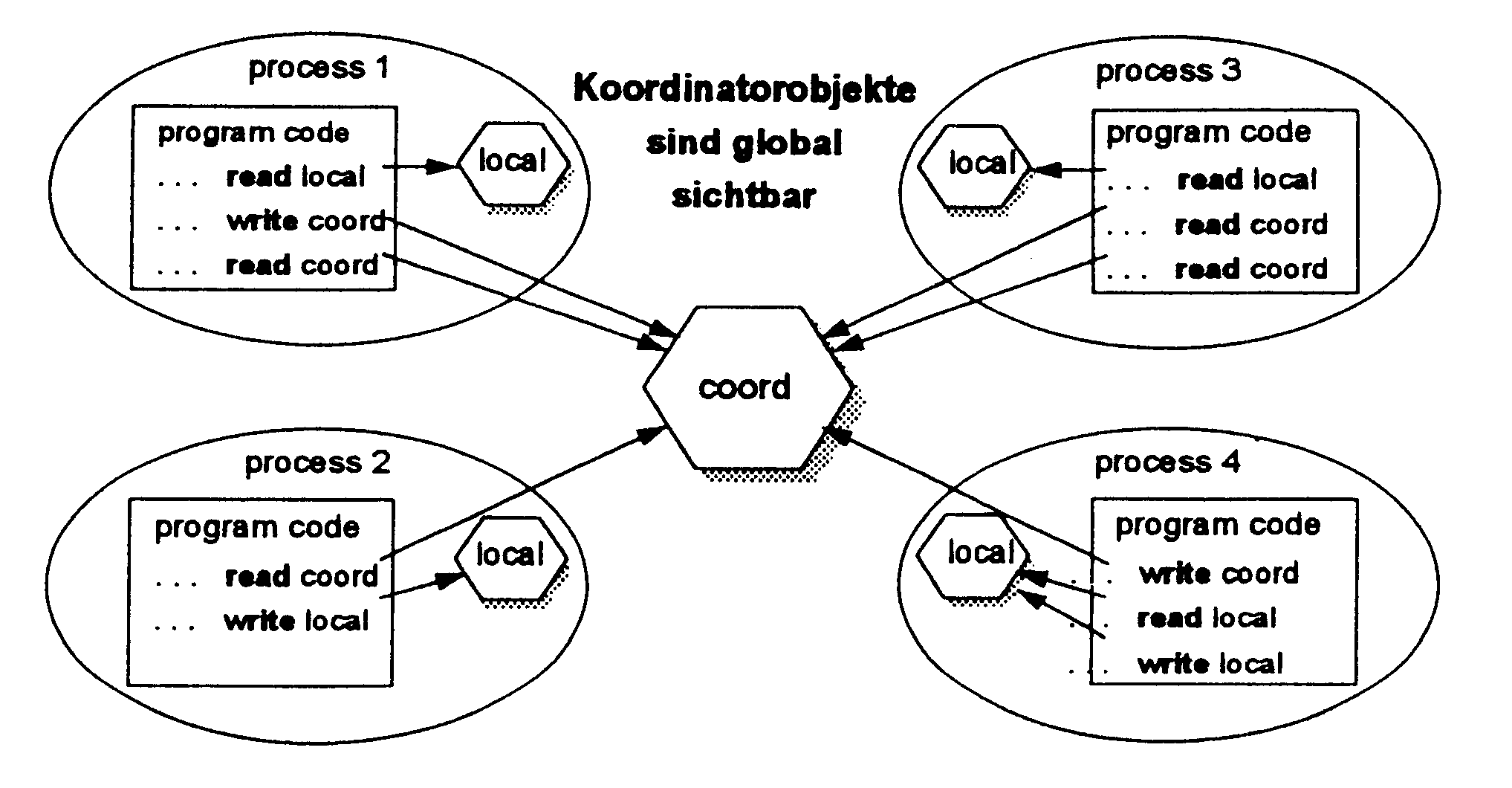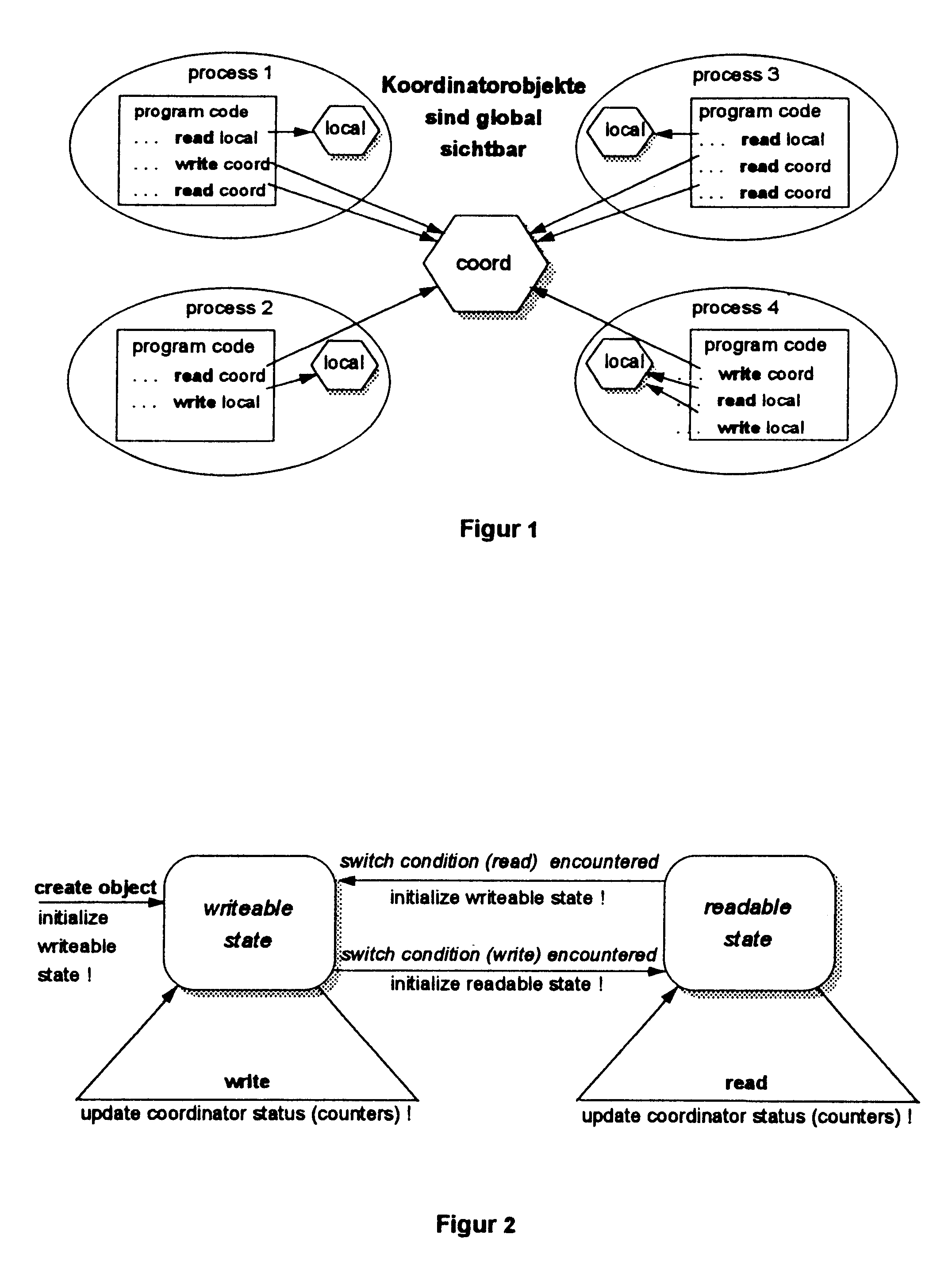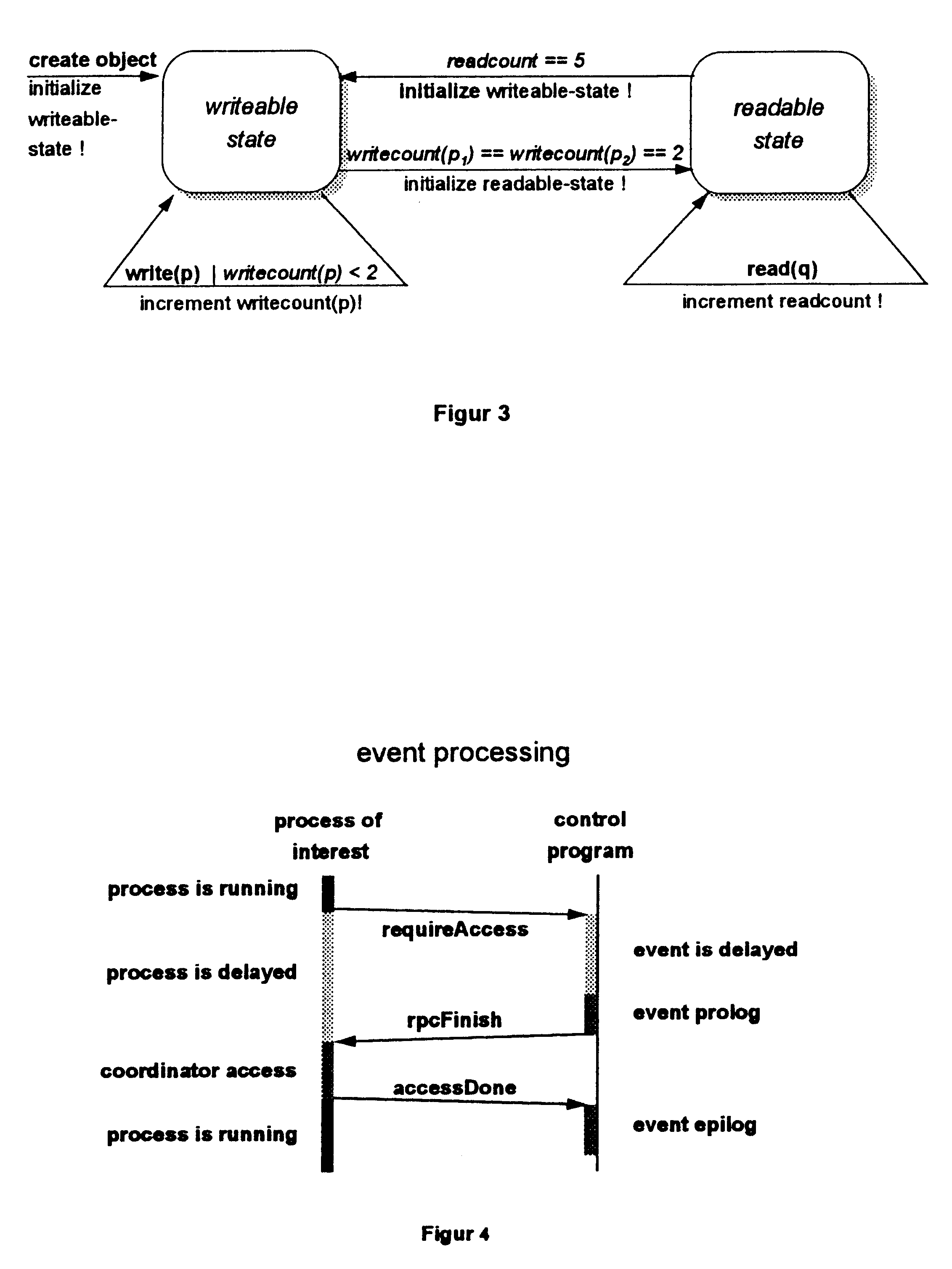Process for coordinating the course of cooperating processes which access a common object
a technology of cooperating processes and common objects, applied in the direction of multi-programming arrangements, program control, instruments, etc., can solve the problems of inability to directly access the memory of foreign processes, inability to design shared memories, and inability to coordinate the access of different processes
- Summary
- Abstract
- Description
- Claims
- Application Information
AI Technical Summary
Benefits of technology
Problems solved by technology
Method used
Image
Examples
Embodiment Construction
simple example from the field of numerics, the normalization of a vector, is considered:
A predetermined vector v is to be brought to length 1 and retain its direction in the n-dimensional space. A sequential program that implements the calculation looks like this in C++:
This program can be parallelized in that the vector is subdivided into strips and each strip is processed by a different process. Each process calculates a part of the scalar product; the partial sums are then added (in common). As soon as this value is available (i.e. when each process has attached its partial sum), each process can carry out the norm calculation and division (actually, the calculation of the norm only has to occur once, which is not done here for the sake of simplicity). A very frequently occurring access pattern derives: For calculation of the overall scalar product, a coordinator object is declared that is written exactly once by each process before it is allowed to be read. This likewise occurs ...
PUM
 Login to View More
Login to View More Abstract
Description
Claims
Application Information
 Login to View More
Login to View More - R&D
- Intellectual Property
- Life Sciences
- Materials
- Tech Scout
- Unparalleled Data Quality
- Higher Quality Content
- 60% Fewer Hallucinations
Browse by: Latest US Patents, China's latest patents, Technical Efficacy Thesaurus, Application Domain, Technology Topic, Popular Technical Reports.
© 2025 PatSnap. All rights reserved.Legal|Privacy policy|Modern Slavery Act Transparency Statement|Sitemap|About US| Contact US: help@patsnap.com



